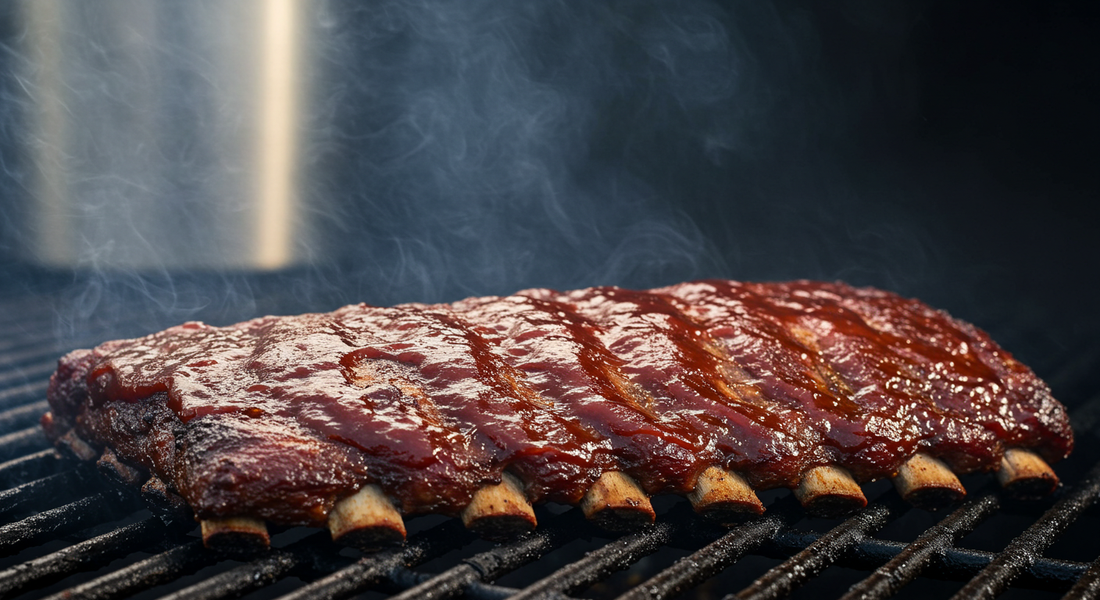
Mastering the Art of Smoking on Your Gas or Charcoal Grill
Share

The rich, complex flavor of perfectly smoked barbecue is something many home cooks aspire to, but there's a common misconception that you need a large, expensive, dedicated smoker to achieve it. The truth is, you already own a fantastic smoker: your everyday backyard grill.
By learning a few basic principles of low-and-slow cooking, you can unlock the smoky flavor potential of your existing gas or charcoal grill and start producing tender, juicy, and deeply flavorful barbecue. This guide will show you how.
Choosing Your Wood
The first step in adding smoke flavor is choosing the right wood.
-
Chips vs. Chunks:
-
Wood chips are small and burn quickly, making them ideal for shorter cooks and for use on a gas grill in a smoker box or foil pouch.
-
Wood chunks are larger, about the size of your fist. They burn slowly and smolder for a long time, making them the perfect choice for long smoking sessions on a charcoal grill.
-
-
A Flavor Guide: Different woods impart different flavors. Pairing the right wood with your meat is key.
-
Hickory: A classic, strong, bacon-like flavor. The go-to for pork (ribs, pork shoulder).
-
Mesquite: A very strong, earthy flavor. Best for beef, especially brisket.
-
Apple: A mild, sweet, and fruity flavor. Perfect for chicken and fish.
-
Oak: A medium, classic smoky flavor that's great with almost anything.
-
-
The Soaking Debate: Many old guides will tell you to soak your wood chips. Most modern pitmasters now agree that using dry wood is better. Soaking only delays the wood from smoldering and creates a billowy, steamy smoke that doesn't flavor the meat as effectively as the thin, blue smoke from a clean-burning piece of dry wood.
The Two-Zone Heat Method
This is the absolute key to smoking on a grill. You must cook your meat with indirect heat, not directly over the flames.
-
How to Smoke on a Gas Grill:
-
Turn on the burners on one side of your grill (e.g., the left and center burners) and leave the other side off.
-
Place your wood chips in a smoker box or a foil pouch with holes poked in it, and set it directly over the lit burners.
-
Place your meat on the unlit side of the grill.
-
-
Smoking with Charcoal Grill:
-
Light your charcoal and, once it's ready, bank all the hot coals to one side of the grill.
-
Place your wood chunks directly on top of the hot coals.
-
Place your meat on the cool side of the grill, away from the coals.
-
-
Use a Water Pan: For either method, place a disposable aluminum pan filled with water on the cool side of the grill, directly under the meat. This pan does two crucial things: it helps to regulate the temperature inside the grill, and it adds moisture to the air, which helps to keep your meat from drying out during a long cook.
Temperature Control and Timing
True barbecue is cooked "low and slow." Maintaining a consistent temperature is the most important skill in this process.
-
Maintain a Low Temperature: Your target temperature inside the grill is between 225-250°F (107-121°C). On a gas grill, adjust your burner knobs to hold this temperature. On a charcoal grill, you'll control the temperature by adjusting the top and bottom vents—opening them more increases airflow and temperature, while closing them reduces it.
-
Use a Good Thermometer: The thermometer on your grill's lid can be wildly inaccurate. A good dual-probe digital thermometer is your best friend. Use one probe to monitor the ambient temperature at the grill grate level and the other to monitor the internal temperature of your meat.
-
Cook to Temperature, Not Time: One of the most important bbq smoking tips is to be patient. Timelines are only a guide. A rack of ribs might take 4-6 hours, while a pork shoulder could take 10-12 hours or more. The meat is done when it reaches its target internal temperature and is tender, not when the clock says it is.
Conclusion: Becoming a True BBQ Pitmaster
You don't need fancy equipment to make incredible barbecue. By mastering the two-zone setup, learning to control your temperature, and using wood smoke for flavor, you can transform your everyday grill into a legitimate smoker. It takes practice and patience, but the reward—a perfectly tender, smoky, and delicious piece of barbecue that you made yourself—is well worth the effort.
